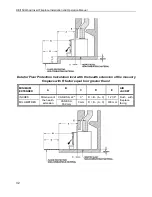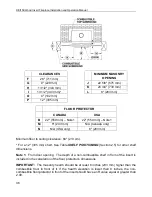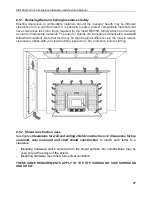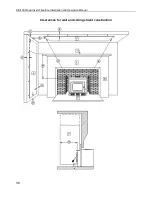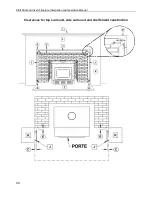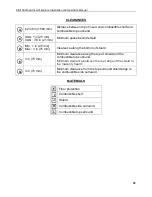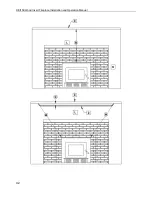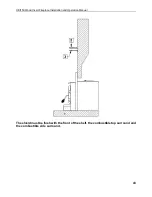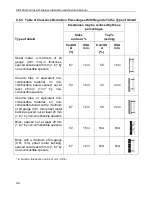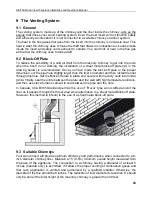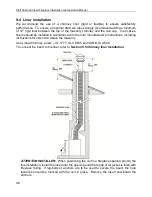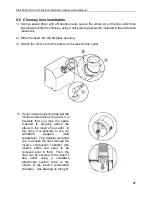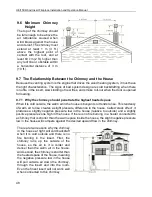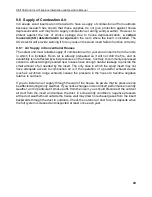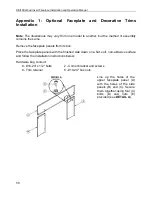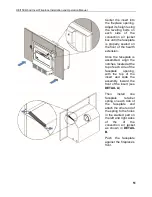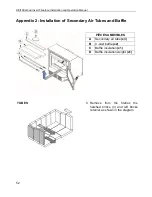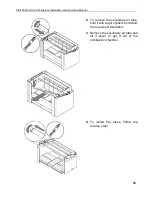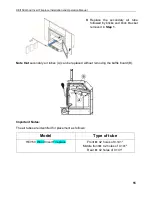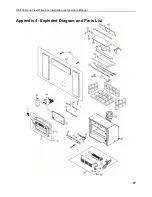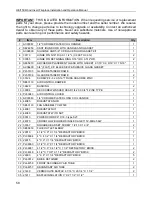
HEI150 Wood Insert Fireplace Installation and Operation Manual
45
9 The Venting System
9.1 General
The venting system, made up of the chimney and the liner inside the chimney, acts as the
engine that drives your wood heating system. Even the best insert will not function safely
and efficiently as intended if it is not connected to a suitable chimney and liner system.
The heat in the flue gases that pass from the insert into the chimney is not waste heat. This
heat is what the chimney uses to make the draft that draws in combustion air, keeps smoke
inside the insert and safely vents exhaust to outside. You can think of heat in the flue gas
as the fuel the chimney uses to make draft.
9.2 Block-Off Plate
To reduce the possibility of a cold air draft from the masonry chimney to get into the room
when the insert in not working, the installation of a sheet metal block-off plate ((A) in the
drawing below) is recommended. Once you have made the block-off plate to the proper
dimension, cut the pipe hole slightly larger than the liner’s diameter and then install the liner
through this hole. Set the Block-off plate in place and secure with masonry nails into mortar
joints. Finally, seal the joints between the plate and the wall with high temperature silicone,
and then use stove-furnace cement to seal between the pipe and the hole.
In Canada, CSA B365 Standard permits the use of ‘’Roxul’’ type wool stuffed around the
liner as it passes through the throat area as an alternative to a sheet metal Block-off plate.
However, this method is inferior to the use of a sheet metal block-off plate.
9.3 Suitable Chimneys
Your wood insert will provide optimum efficiency and performance when connected to a 6-
inch diameter chimney liner. Maintain a 15' (4.5m) minimum overall height measured from
the base of the appliance. The connection to a chimney having a diameter of at least 5
inches (Canada only) is permitted, if it allows the proper venting of combustion gases and
that such application is verified and authorized by a qualified installer. Otherwise, the
diameter of the flue should be 6 inches. The reduction of liner diameter to less than 6” should
only be done if the total height of the masonry chimney is greater than 20 feet.


